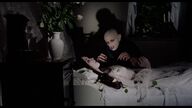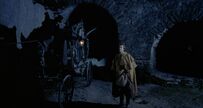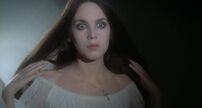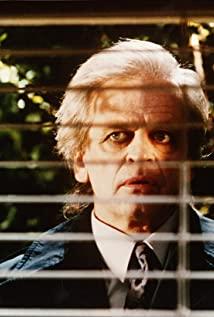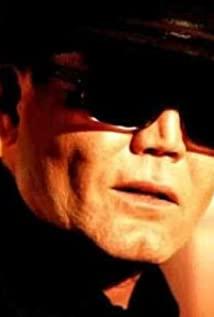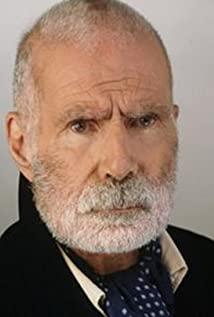Text
In 1922, the German expressionist film master Murnau put the story of Count Dracula on the screen for the first time, causing great panic to the audience at that time. The image of the vampire Dracula has been reproduced and subverted countless times in subsequent movies. Vertically, Herzog’s [Nosferatu: Ghosts of the Night] has Murnau’s [Nosferatu] in the front and Coppola’s [Scary Four Hundred Years] in the back. It can stand out in many movies and be as famous as the two, relying on the meticulous scene arrangement and theatrical performance of the actors. The three-act tragedy. From the perspective of the story, Herzog’s work is closer to Murnau’s [Nosferatu], while Murnau’s work is derived from Bram Stoker’s novel "De "Lacula", because of the inability to deal with the copyright issue, Mornau had to make some modifications to the original work, such as changing the name of Count Dracula to "Nosferatu", and the protagonist and all other than Dracula. An understatement of the role. By the time Herzog made this film, there was no copyright issue, but he still used the more profound name "Nosferatu" and the framework of Murnau's script, and then went into some details. For example, he changed the names of the characters in the original novel (but Herzog swapped the names of the characters corresponding to Lucy and Mina in the original). In addition, although the historical status of the original movie cannot be shaken, the too old-fashioned story itself is still not suitable for the context of the 1970s, so Herzog slightly adjusted it to change an old-fashioned story that opposes good and evil. It became an intertwined tragedy composed of the heroes and heroines Huck and Lucy, and Count Dracula. Huck worked hard every day in order to make his wife live a better life, so he faced the difficult task entrusted by his boss-to go to the "vampire town" Transylvania and the mysterious Count Dracula He accepted the meeting without hesitation. Huck said goodbye to his wife and embarked on a long and arduous journey. The horrible rumors about Dracula’s castle in the road population, and the books about vampires he had read, did not make him flinch. After seeing Dracula, he was placed under house arrest in the castle, suffering from missing his beloved wife during the day, and attacked by Dracula at night. When Dracula set off to look for Lucy in the small town where Huck lived, Huck was able to escape and went home through all the hardships, but the attack of the illness made him completely lost his memory. His memory of his lover is due to his responsibility. The love disappeared together. Dracula is a poor old man who has endured hundreds of years of loneliness. At the first dinner he met with Huck, he had a A sincere inner monologue. Although he has an immortal body, he has no deep love. He begs Lucy to give him some love, but at the same time he must accept instinct. There is no doubt that this is Dracula infused with humanity. What he needs is the love he will never get. What he is tired of is the eternity pursued by the world. Fate is still cruel", the cruelty that Dracula faces is precisely the blood and loneliness night after night. Lucy's role can be regarded as a model of loyalty, and it is her loyalty to her husband that satisfies the condition that "a holy girl can make a vampire forget the first crow of a rooster", which successfully solved Dracula's "benefit to mankind" ". In the first meeting between Lucy and Dracula, she was asked to dedicate part of her love to her husband to Dracula, but Lucy said firmly: "Don't think about it! I won't even give this love to God! "Lucy's love for Huck was not complete, but when her lover returned, she lost her memory; when Dracula’s nightmares continued to emerge; when the people in the town died one after another, the lost Lucy took death as his home. , To serve as a sacrifice for slayers. The neurotic goddess encounters the emotional devil and vampires are fascinating because of their mysterious habits and tragic fate. They are noble and cold, and at the same time carry the danger of being unpredictable and maddening. But this fascinating trait has changed a bit after the years have settled. Now the dangerous factors in vampires seem to have disappeared. The vampires who were originally awe-inspiring three-pointers have become gentle and amiable, from [Night Interview with Vampires] to [Twilight City], the appearance of the vampire is getting more handsome, and the manners are getting more refined. And horror, the characteristic of this vampire that was first deeply rooted in the hearts of the people has been eliminated by the times. Back to Herzog’s [Nosferatu], in the appearance of a vampire, Herzog almost copied the image of Dracula in the old version of Murnau: withered face, bald head, and The outrageous nails and two sharp and eye-catching front teeth are closer to the description of the original book. After all, Earl Dracula is a lonely old man who has lived for hundreds of years, not a handsome boy with a strong body. From the face of such a vampire, it is impossible for people to think of "closeness". In addition to styling, the distinctive characterization of Adjani and Kinsky also adds to the film a lot. Before starring in [Nosferatu], Ajani had already explained what madness and infatuation is in [Adele Hugo's Story] and [Violet and François], Ajia Ni's habitual neuroticism and madness in the bones of her body are ready to come out. At the beginning of the movie is a long-shot passage in a dark cave. The camera sweeps the rotten corpses around and creates a scene with gloomy music. A terrifying scene, the shaking picture is very substituting, followed by a huge bat slowly waving its wings, and then the picture cuts to the awakened face of Lucy played by Ajani. It turns out that all of this is It is Lucy's dream, and it can also be regarded as a harbinger of later doom. For most of the movie, Ajani switched between the three states of missing her husband, Huarong lost her color, and screaming in surprise, so it is hard to say how amazing Ajani’s performance is, but her appearance But it is reminiscent of the banshee in Zhiguai novels: black hair, white shirt and red lips, but Ajani's blue eyes are full of terror rather than charm. Moreover, Ajani's wide and round eyes may only be compared with Shelly Duval in [The Shining]. And the "madman" Kinsky, who is notoriously difficult to serve, has a face that can blow up William Dafoe on the horror index. His own extraordinary actions outside the scene are even more so that people will never say no. End of the topic. Before playing "Nosferatu", Kinsky and Herzog had a fierce dispute when filming [Aguirre, God’s Wrath] because of the harsh environment, so people were worried about filming [The Ghost of the Night] Kinsky will break out again. After all, he spends more than four hours every day putting on makeup. This will obviously become an excuse for him to be "wild", but this time, he seems to be a well-behaved child who cooperates very well. Although the Kinsky version of "Nosferatu" is a refurbishment of Mornau's old version in appearance, the melancholy eyes under Kinsky's pale face give it a fragility and a politeness. Behavior, so the vampire's hostility is completely gone, replaced by the opposition between Dracula's evil appearance and fragile heart, full of drama. Herzog’s Condiments The Herzog version of [Nosferatu] can be roughly divided into two parts. The first half is Huck’s journey to the castle to find Dracula, and the second half is Dracula’s invasion of the town. , Spread the plague and panic until it is eliminated. In the first half, the desolate nature becomes the director's weapon for rendering the horror atmosphere. The verdant pastoral scenery at the beginning of the journey is gradually replaced by the cave wilderness captured by the cold-toned lens, and Huck walks lonely. The dark castle is like a cage, and the faintly flickering candlelight always makes Huck like an illusion. He can't even tell whether the raid that Dracula left on his neck is a dream or reality. In the second half of the film, Herzog's skill in scene scheduling began to appear, such as the first meeting between Dracula and Lucy. Lucy is in the center of the screen facing away from the audience, and the camera is aimed at Lucy’s face in the mirror. At this moment, the door on the right rear suddenly opens, but only Dracula’s footsteps and Dracula’s gradual expansion on the door are heard. shadow (Vampires won't appear in the mirror) Until Dracula got close, he didn't enter from the right side of the screen. Looking at the carnival in the square, people who gave up resistance to the "plague" moved their dining tables to the square, danced and played around the bonfire, surrounded by rats everywhere, and took pictures of the scene before the end of the day, desperate and moving. . In the film, Herzog used Lucy to say "God always stays away from us when we need him most", and at the same time mocks the incompetence of emerging science by reshaping Van Helsing, the "vampire hunter". His only achievement in the film turned out to be Dracula's "whipping the corpse", and he took the credit for destroying the vampire to himself. The metaphor here is very interesting. Dracula died of science unexplainable mystery (the restraint of the holy girl and sunshine), while the "speaker of science" (in the film is Van Helsing) will kill Dracula’s victory. For yourself. It is not God or science that saves mankind. What Herzog is mocking is not the object of faith, but the faith itself, so Van Helsing's arrest is more like a joke of Herzog. Just like at the end of the story, Huck, who was bitten by Dracula and did not die, became a new vampire and rode his horse into the depths of the desert. So far, neither scientific creed nor mysticism has wiped out anyone. Published in the June 2014 issue of "Watching Movies Midnight Show"
View more about Nosferatu the Vampyre reviews



